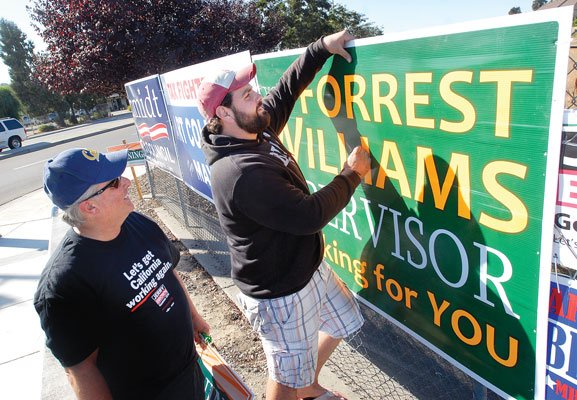Those hopeful that Gilroy’s reported $21.4 million reserve fund
would mean less City Hall closures and a little extra cash could be
in for a surprise when the city adopts its two-year budget later
this spring.
Those hopeful that Gilroy’s reported $21.4 million reserve fund would mean less City Hall closures and a little extra cash could be in for a surprise when the city adopts its two-year budget later this spring.
“It looks simple on the surface, but once you start peeling back the edges you’ll see it’s not so easy,” Gilroy City Councilman Perry Woodward said. “I’m looking forward to learning how much we really have opposed to how much we think we have.”
With the general fund filing deficits and financing negative balances for capital improvements, the city isn’t exactly lounging on a mountain of money.
Mayor Al Pinheiro said the city will have a better idea of what it can and can’t fund next month when the Council and City Administrator Tom Haglund sit down and pore over actual figures.
The city ended the 2009-10 fiscal year last June with $21.4 million in reserves and finished $2.5 million ahead of its budget estimates, Haglund said.
He said those figures were the result of “walking on egg shells” and the culmination of different frugal actions, including layoffs, retirements and the institution of furloughs.
“Those are one-time savings. It’s not ongoing revenue,” Haglund said. “We were kind of weary and skittish about spending very much money (in the last fiscal year).”
Some city entities, such as the public facilities fund, will remain in deficit for the foreseeable future, Haglund said. Because that fund deals with nondescretionary expenditures, “There isn’t enough revenue for the next couple years to balance that out,” he said.
Haglund added those expenses can be covered by the city’s general fund, adding that the city could adopt its next budget by May 7.
“Time will tell what we’ll be able to do,” he said.
During the Council’s annual goal-setting retreat, Pinheiro said officials from other cities “kind of made fun of us back then,” when Gilroy starting building its reserve several years ago.
“We’re not being made fun of now,” Pinheiro said.
Some in the Council have already weighed in on how to spend the reserves.
Councilman Dion Bracco, along with Councilman Bob Dillon, suggested during the Feb. 7 Council meeting that the city could use money from the reserve to lend to downtown building owners to expedite mandatory seismic retrofits.
If the city does end up retaining a substantial amount in its reserve, Woodward said, “We ought to be very strategic about what we do with it.”
Woodward said he would like to further fund the city’s Economic Development Corporation, which facilitates business growth and development in Gilroy.
“The Economic Development Corporation has been underfunded for a while,” Woodward said.
Furloughs are another issue that could be tackled by a substantial reserve fund.
Councilwoman Cat Tucker said the city should use the money to offer more services to residents, including reducing furlough days, or eliminating them altogether.
City offices are closed to the public every Friday until June, when the fiscal year ends. City employees are furloughed every first and third Friday.
“Not a lot of people go down to City Hall, but it’s the idea of it being open to them,” Tucker said. “Why are we holding so much money when we could be using it for services?”
Pinheiro said “people are adjusting” to city offices being closed every Friday, and the city still plans to fulfill the needs of residents.
“We want a balanced budget,” Pinheiro said. “Our first priority will be to have a budget that meets the service level needs of those in the community.”
The city was also more uncertain of its economic future three years ago, Tucker said, and the city now needs to start reinvesting more money into capital improvements.
She said the city hoarding cash “just doesn’t make sense to me.”
“We need to go back to spending the money for things they need to be spent for. We need to fully invest in our economic future,” Tucker said.
Gilroy’s unemployment rate was 15.5 percent as of Dec. 2010, according to preliminary figures from the Bureau of Labor Statistics, which would put last year’s average unemployment rate at 16.65 percent.
In 2008, the city’s unemployment rate was 9.3 percent.
The city’s sales tax revenue fell from $14.5 million in 2007 to about $10.5 million in 2009, Haglund said.
However the city’s budget takes shape, the Council and city officials seriously need to consider spending some of its savings, Woodward said.
“We’re not a corporation,” he said. “We, as a public entity, should not be holding onto more money than we need.”













